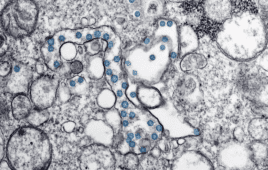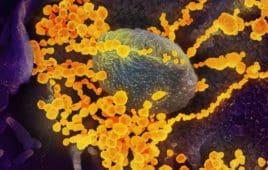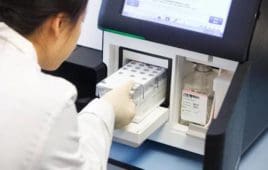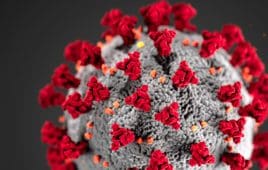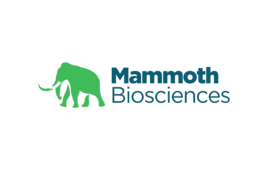Illumina (Nasdaq:ILMN) announced that it commenced a headcount reduction totaling approximately 5% of its global workforce. The company said yesterday that it is proactively realigning its core operating expenses in response to the current macroeconomic environment. It seeks to maintain its focus on its innovation roadmap and sustainable long-term growth, according to an SEC filing. Earlier…
Illumina’s new NovaSeq X can sequence 20,000 genomes a year
Illumina (Nasdaq:ILMN) announced last week that it launched its new NovaSeq X series of production-scale sequencers. San Diego-based Illumina said its new sequencers “push the limits of what is possible with genomic medicine.” NovaSeq X and NovaSeq X Plus offer faster, more powerful and more sustainable sequencing. The latter can generate more than 20,000 whole…
How Seer aims to remove technological barriers to studying the proteome
Founded in 2017, the proteomics company Seer (Nasdaq:SEER) is building up a growing roster of customers, including pharma and biotech companies, translational and academic labs and CROs. Applications of its technology include biomarker discovery, target identification and multiomics research for cancer or other complex disease detection. Recently, Weill Cornell Medicine and privately-held SpaceX used Seer’s…
DNA Script raises $165M Series C for DNA printing platform
DNA Script announced today that it raised $165 million in a Series C financing round, bringing its total capital raised to $280 million. South San Francisco-based DNA Script earmarked the funds raised to accelerate expansion and commercialization for the company’s Syntax benchtop nucleic acid printer and to broaden its portfolio of products powered by enzymatic…
DNA Script launches a benchtop DNA printer
DNA Script announced the commercial launch of its Syntax platform with the Syntax system, a benchtop nucleic acid printer. South San Francisco, Calif.-based DNA Script designed its Syntax system, a fully integrated, automated printer powered by enzymatic DNA synthesis (EDS) technology, to synthesize 96 DNA oligos in parallel, comprised of up to 60 nucleotides in…
Unraveling the promise of genetics for treating progressive illness
For almost every major common disease, researchers have less understanding of the severe forms than milder cases. And as a result, people with severe forms of diseases often have few treatment options available. Thus, the significant unmet medical need for many diseases ranging from multiple sclerosis to Alzheimer’s is to halt disease progression and treat severe…
How to build a foundation for the next phase of Alzheimer’s disease research
Alzheimer’s disease has one of the highest financial burdens. The Alzheimer’s Association estimates that the cost of the disease in the U.S. will hit $355 billion in 2021. “Not only is Alzheimer’s one of the most expensive, it’s probably one of the most devastating diseases of humans,” said Dr. Allan Levey, professor and chairman of…
Genuity and Emory partner on neurodegenerative disease research
Privately-held Genuity Science and Emory University are collaborating with the hopes to accelerate drug research and development for neurodegenerative diseases such as Alzheimer’s and Parkinson’s. Clinical breakthroughs for neurodegenerative diseases are rare. The most recent drug to win FDA approval for Alzheimer’s, Namenda (memantine) from AbbVie-acquired Allergan, did so in 2003. And Levodopa, one of the most-effective Parkinson’s…
RCSB Protein Data Bank now has more than 1,000 SARS-CoV-2 proteins
The RCSB Protein Data Bank has announced that more than 1,000 SARS-CoV-2 proteins are available at no cost. Headquartered at Rutgers University–New Brunswick, the RCSB Protein Data Bank released its first SARS-CoV-2 structure — the coronavirus main protease (PDB 6lu7) — on Feb. 5, 2020. The database has helped drive the development of effective COVID-19 vaccines. It continues to shed…
EU and US take steps to battle coronavirus mutations
The EU recently added clauses to COVID-19 vaccine contracts to prioritize vaccines that are effective against emerging SARS-CoV-2 variants. Meanwhile, a U.S. House bill that would provide $1.75 billion for genomic sequencing of coronavirus samples is scheduled for floor debate and the Senate is considering similar legislation. The UK variant (B.1.1.7) that is spreading across…
Are predictive diagnostics the Doppler radar of disease?
What do cupcakes have to do with oncology, and more specifically, predictive diagnostics? Before I explain, I’ll provide some context. I recently came across an image that illustrated the difference between how Doppler radar detects conditions for a Tornado Watch versus a Tornado Warning using cupcakes.1 One side of the graphic shows each of the…
4 ways SARS-CoV-2 variants could change the battle against the pandemic
Highly-transmissible COVID-19 variants have likely been circulating undetected for months in places like the U.K., South Africa and Brazil. They then seemed to burst onto the scene, fueling large outbreaks that dwarfed preceding ones. While the variants aren’t well understood, they suggest that SARS-CoV-2 is mutating in ways that confer an evolutionary advantage. They thus…
FDA releases guidance to speed personalized drug development
The FDA today released draft guidance designed to make it easier for researchers to seek approvals for drugs designed for individuals with severe genetic diseases. The draft guidance focuses on investigational new drug submissions for antisense oligonucleotide (ASO) products because these are the most common drugs being developed for severely debilitating or life-threatening genetic diseases.…
FDA OKs intentional genomic alteration in pigs — with potential therapeutic applications
The FDA has approved an intentional genomic alteration (IGA) in a line of domestic pigs known as GalSafe. The decision marks the first time the agency has signed off on a biotechnology product for both food applications and potential therapeutic use. The news “represents a tremendous milestone for scientific innovation,” said FDA Commissioner Dr. Stephen…
Oxford Gene Technology expands next-generation sequencing line
Oxford Gene Technology (OGT) has expanded its SureSeq line of next-generation sequencing (NGS) panels to detect genetic variants associated with breast and ovarian cancer and myeloid disorders. One of the offerings is a myeloid panel that can detect abnormalities in 70 genes associated with a range of diseases, including acute myeloid leukemia, myelodysplastic syndrome and…
The top 10 medical disruptors of 2021
For the past 18 years, the Cleveland Clinic has predicted what the top 10 medical disruptors will be for the following year. The list of technologies, cultivated by a panel of physicians and scientists at the clinic, was led by Dr. Will Morris, executive medical director of Cleveland Clinic Innovations, and Dr. Akhil Saklecha, managing…
Illumina may buy back Grail
Illumina (NSDQ:ILMN) may acquire Grail for more than $8 billion — four years after it spun out the cancer detection startup. That’s according to a Bloomberg report out yesterday, which cited people familiar with the matter. Analysts told Bloomberg that the acquisition would put Illumina — a giant in the DNA sequencing space — in direct…
Mission Bio completes $70M Series C for its tech to enable better cancer treatments
Mission Bio has secured $70 million in Series C financing to scale its single-cell multi-omics technology, according to the company. Novo Growth, the growth equity of Novo Holdings, led the round that included new investor Soleus Capital. Previous investors Mayfield, Cota, and Agilent also participated in the financing, which brings the company’s total funding to…
Sherlock, Binx to develop first CRISPR-based POC test for COVID-19
Sherlock Biosciences and Binx Health recently signed a strategic partnership to develop a point-of-care diagnostic test for COVID-19 that uses CRISPR technology. Through the collaboration, Binx’s IO diagnostic platform will be combined with the Sherlock CRISPR technology to develop a test that is simple to use. The test is designed to provide rapid and accurate…
New web resource keeps vaccine researchers up-to-date on COVID-19 protein structures
Wladek Minor of the University of Virginia and other top structural biologists have created a Web resource so that scientists can track the progress of investigations into COVID-19 protein structures. The website also includes the research team’s assessment of the quality of the individual models. It includes enhanced versions of the protein structures when possible.…
Sandia researchers look for genetic bullet against COVID-19
Researchers at Sandia National Laboratories are using genetic resequencing tools to find ways to stop the virus behind the COVID-19 pandemic. Biochemist Joe Schoeniger and virologist Oscar Negrete’s work involves genetically engineering a deployable antiviral countermeasure for COVID-19 using CRISPR-based technology. “The goal is to find new ‘reloadable’ countermeasures for viral outbreaks that do not…
NIH says still no drug proven safe, effective for treating COVID-19
The National Institutes of Health today announced the publishing of new COVID-19 treatment guidelines, and the expert panel producing the guidelines says no drug has yet been proven safe and effective against the virus. NIH has the new guidelines posted online at covid19treatmentguidelines.nih.gov — and says it will update the guidelines often as new peer-reviewed…
Sanofi, GSK seek to have an adjuvanted COVID-19 vaccine ready by late 2021
Sanofi and GSK recently announced that they have signed a letter of intent to collaborate on an adjuvanted vaccine for COVID-19 — with a goal of having the vaccine available by the second half of 2021. Sanofi is contributing its S-protein COVID-19 antigen. The company’s recombinant DNA technology produced an exact genetic match to proteins…
Mammoth preparing to seek EUA for CRISPR COVID-19 test
CRISPR-startup Mammoth Biosciences will file for an emergency use application from the FDA after publishing a study in Nature Biotechnology that suggests its platform can detect SARS-CoV-2 from a respiratory swab RNA extracts in less than 45 minutes. The company says the paper contains the first peer-reviewed data using CRISPR diagnostics for COVID-19. In a…
SGI-DNA touts its automated gene printer for coronavirus vaccine development
Synthetic biology company SGI-DNA is touting its efforts to accelerate research in the creation of vaccines for SARS-CoV-2, the virus causing the COVID-19 pandemic. The San Diego-based company said in a news release last month that it built the genes thought to be critical to developing successful vaccines against the virus and made those tools…









